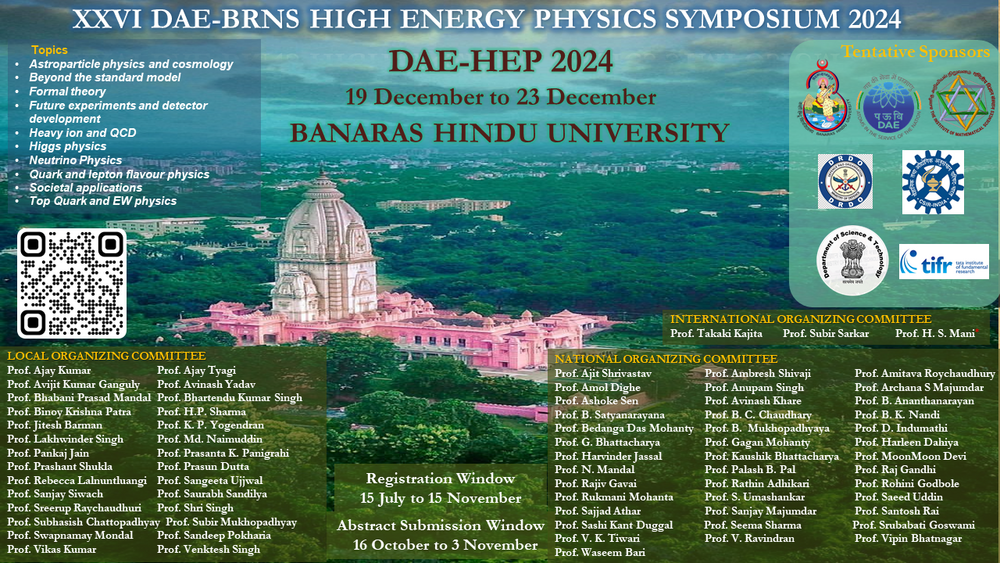Speaker
Description
The Compressed Baryonic Matter (CBM) experiment, being developed at the Facility for Antiproton and Ion Research (FAIR) in Darmstadt, Germany, is focused on exploring the phase diagram of strongly interacting matter at high net baryon densities and moderate temperatures. The, SIS-100 accelerator ring at FAIR accelerator facility will deliver accelerated beam with kinetic energies reaching 29 GeV for protons and up to 11 A GeV for heavy ions. A critical physics observable for examining the hot, dense matter produced in collisions is the identification of muon pairs, resulting from the decay of Low Mass Vector Mesons (LMVMs). The Muon Chamber (MuCh)[2] detector system is being built to identify the muon pairs in a background mostly populated by muons from weak decay of pions and kaons produced in the collisions.
Simulation studies on reconstructing LMVMs (ω, η, φ) through the di-muon decay channel will be presented for Au+Au collisions at 10 A GeV using various machine learning models. These results will be compared with those obtained through traditional cut-based analysis. The traditional method relies on track selection criteria, including the number of hits in the Silicon Tracking System (STS), Muon Chamber (MuCh), Transition Radiation Detector (TRD), and Time of Flight (TOF) detector, as well as χ² values for the Vertex, STS, and MuCh, along with a 2σ TOF mass cut. These parameters are also used in training and testing machine learning models. The performance of the Boosted Decision Tree Gradient (BDTG) model in improving reconstruction efficiency (ϵ) of LMVMs while maintaining the Signal-to-Background ratio (S/B) will be reported.
| Field of contribution | Experiment |
|---|

